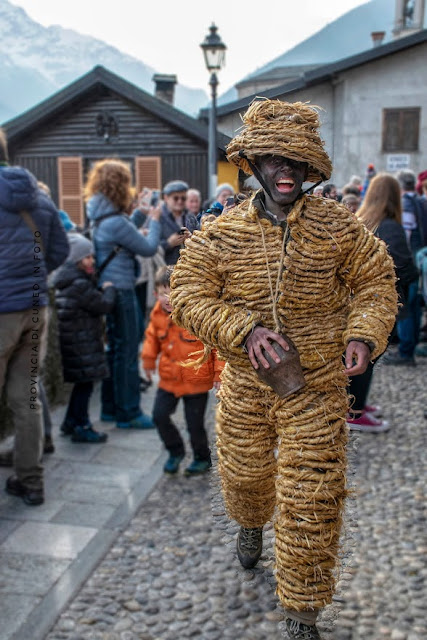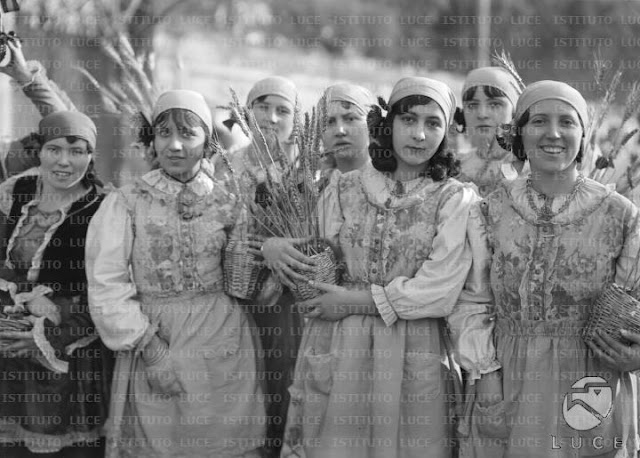Hello all,
While I am finding my research in Asia to be fascinating, it is very complicated, and I thought I would return to Europe today. As I have already done an article on Aosta, I will continue with Piedmont. I had intended to do an overview of Italy, but found more material than I expected in Piemonte. The Italians have published comparatively little on this subject. Some neighboring peoples, like the Austrians and Croatians have written much on their costumes, but the Italians, unfortunately, seem to be less interested. Also, the Italians have been much involved in the mainstream of European Fashion, and thus there are areas which seem never to have developed a local costume.
Italy is divided into 20 Paese. This are sometimes called provinces, but this is incorrect. A better translation would be Lands, although some call them Regions. The Paese are divided into provinces.
Piedmont
https://en.wikipedia.org/wiki/Piedmont
In Italian, Piemonte. This lies in northwest Italy, and borders France on the west, Liguria on the south, Lombardy on the east, and Aosta and Switzerland on the north. It is shown in yellow on the map above. Here is a map of Piedmont, showing the provinces.
As you can see, mountains flank the region on the southwest, west, and north. The bulk of the surviving folk costumes are found in these mountains, both because mountain people tend to retain more of their individual folk culture, and also because these areas are inhabited by communities which speak minority languages. Piedmont is a transitional area. The people in the western mountains speak a dialect of Occitan, or Provencal, and are culturally connected to the Provencal further west in France. The people in the northern mountains, by Aosta, speak Arpitan, and are culturally connected to Aosta, French speaking Switzerland, and Savoy. Still further north there are pockets of Walser Germans, who have connections with the German speaking parts of Canton Valais in Switzerland. Most of the lowlanders speak Piemontese, https://en.wikipedia.org/wiki/Piedmontese_language which is a language or dialect related to Italian. A minority in the east, particularly in Novara, speak the Lombard language. Here is a linguistic map of Piedmont.
Cuneo Province
https://en.wikipedia.org/wiki/Province_of_Cuneo
Occitan region
https://en.wikipedia.org/wiki/Vivaro-Alpine_dialect
This region is found in the mountains of western Cuneo - Coumboscuro and Turin Provinces.
There are cultural exchanges and pilgrimages which take place from Provence. The people here are cognizant of their connection to the rest of Occitania. In these photos we see a mix of costumes from Provence and from Piedmont.
The costumes, however, are more similar to those of Savoie, Piedmont having been a part of the Duchy of Savoy for a long time. The various costumes are distributed by valley. Here I will show them from South to North.
Valle Vermenagna
https://it.wikipedia.org/wiki/Valle_Vermenagna
The big festival of this valley is called Abaiya, and celebrates the expulsion of the Saracens on the last Sunday in August. These photos were taken in the town of Limone Piemonte.
http://www.limoneturismo.it/pagina.php?id=72&lang=eng
Valle Gesso
https://en.wikipedia.org/wiki/Valle_Gesso
The woman's costume of this vally is rich in silk fabrics, and is reminiscent of those in the Maurienne valley in Savoie. Unfortunately, I was only able to find one image of it. The cross hanging on a ribbon around the neck is common to many of these western valleys.
On Feb 16, there is the festival of the Orso di Segale of Valdieri, the 'Rye Bear'. This is a local mumming tradition in which local men dress up in rye straw. Here are just a couple of images of the Rye Bear of Valdieri.
Valle Stura di Demonte
https://en.wikipedia.org/wiki/Valle_Stura_di_Demonte
Again I have found very little from this valley. It has the same character as the other costumes in the region. The first print shows daily working clothes, and the photo is of festive dress.
Valle Maira
https://en.wikipedia.org/wiki/Maira_Valley
Here is a pair of Lenci dolls representing a bridal pair from the town of Acceglio.
There is also a mumming tradition in Acceglio called barboiras.
An exhibit from Valle Maira.
A video of a song festival in the town of Marmora. Only one of the groups wears costumes, matching the man in the photo above. But the singing is excellent.
https://www.youtube.com/watch?v=aFVOPEOCUWQ
Valle Varaita
https://en.wikipedia.org/wiki/Varaita_Valley
In contrast to some of the other valleys, the costume of Valle Varaita is well known, and there is a very good exhibit in the museum in the village of Chianale, found at the head of the valley. Worth a visit if you are in the area. Other notable towns in the valley include Casteldelfino and Sampeyre. http://www.museodelcostumechianale.it/dovesiamo.asp
This first image is from Emma Calderini, who wrote the only comprehensive book on Italian Folk Costumes that exists, to my knowledge. This is a woman from Casteldelfino.
A very particular coif is worn with this costume. It has more or less lace depending on the occasion.
There is a chemise with a lace collar, over which is worn a gown with no waist, an apron that has a bib pinned to the chest over a shawl. A cross on a ribbon is worn around the neck, and there are black silk ribbons attached which hang down in back.
The very uppermost part of the Po River valley belongs to this region, but I have not found any material on it.
Piedmont Region
I have found little from the rest of this area. This image is also from Calderini, and shows a bride from the town of Moretta, in the north of Cuneo Province.
This print is of a woman from the upper reaches of the Tanara valley, which would be on the border between Cuneo and Liguria, east of the Occitan region.
On the occasion of the marriage of the Prince of Piedmont Umberto of Savoy, January 8, 1930, many communities sent representatives to Rome. There were photos taken of the occasion, and many Italian folk costumes are represented, including some that are not specified. It would be wonderful to visit this occasion with a time machine and modern cameras with loads of memory. This image is simply labelled two women from Cuneo. They might be from Stura or Gesso Valley.
The flat lands in southeastern Piedmont were once called Monferrato. This included the current provinces of Asti and Alessandria.
The dance Monferrina originated in this area, and became very popular in north Italy. Here is a group doing the dance. These are stage costumes as indicated, among other things by the skimpy aprons.
This is a screenshot from the following video:
Monferrina in Palazzo Lascaris
https://www.youtube.com/watch?v=OyvvFPQZ5N0
This costume seems to be meant to represent this region. Here are a couple of Lenci dolls wearing the same costume.
Some historical reenactors.
There are also a couple of girls who seem to be wearing the costume from the following photo, which is also from the 1930 wedding of Prince Umberto, and is labelled Alessandria.
The last image that I have is an old print, which shows a woman from Asti.
I will continue the costumes of Piedmont in the next article.
Thank you for reading, I hope that you have found this to be interesting and informative.
Roman K.
Source Material:
Il Costume Popolare in Italia, Emma Calderini, Milano, 1953
plus many online sources.





























































hello!! i really love this. these regions are where my family came from, and i couldnt find anything on their folkwear. so THANK YOU!!!
ReplyDeletei was wondering if sometime you could do a post on Liguria?